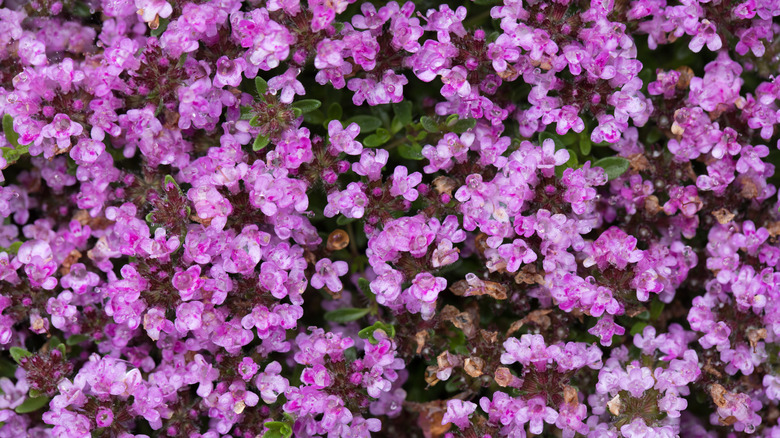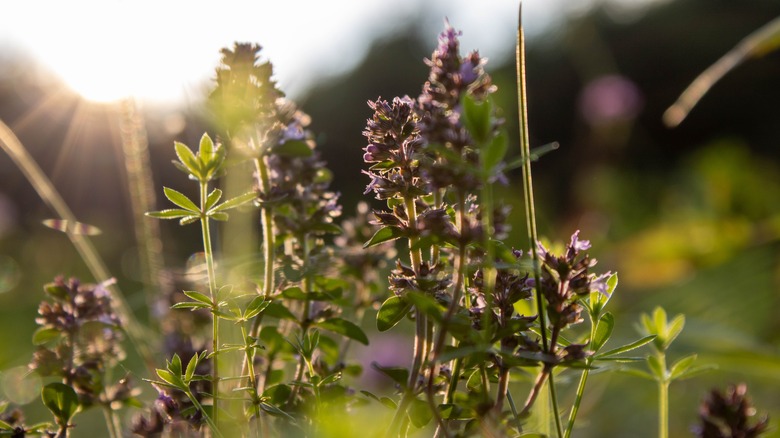Why Your Creeping Thyme Leaves Are Turning Brown (& What To Do About It)
When you think of thyme, maybe you consider its culinary uses. The herb is probably in your spice cabinet right now or growing on your window sill waiting to be added to your next dish. But there's another type of useful thyme that has little to do with cooking. Creeping thyme (Thymus serpyllum) is an aromatic semi-evergreen groundcover plant that only reaches a few inches tall and produces small pink or purple blooms in the summer, beautifying your landscape. While it's generally low-maintenance, if you notice your creeping plant's leaves are browning, there could be an issue you need to address. Poor drainage, sunlight, or age could be the cause. Creeping thyme only lives for about five years, so if that time has passed, the brown leaves could mean the end of its lifespan.
That said, keep in mind that the leaves can also turn brown in the fall, so note the time of year because the leaves changing to brown or copper could be perfectly normal. Frost damage can also turn your thyme leaves brown — again, a seasonal issue.
To fix your thyme, the first step is identification. If seasonal changes are not the problem, note the conditions surrounding your plants. To successfully grow a creeping thyme plant, you want well-drained soil low in nutrients. Thyme also requires full sun, so too much shade might be a reason for the brown leaves. Soggy soil can cause root rot, also turning the leaves. Another culprit could be pests, specifically spider mites. Once you have your cause, the next step is correction.
Fixing your thyme
If the soil around your thyme is pooling water or remains soggy, you must fix that issue to save your plant. Start by digging up the plant, removing the brown and yellow leaves, and checking it for root rot. If the roots aren't black, you may have caught the problem early. Add silt, sand, compost, small rocks, or shredded leaves to the soil to help with drainage, add your pruned plant back into the ground, and water less frequently to ensure the pooling doesn't recur. If you find root rot, you need to know how to deal with it. The best way, if you can save the plant at all, is by cutting off the damaged roots before returning it to the ground.
Next, look for spider mites — small orange-bodied insects that look like spiders — and their webs. Treat any infestations with insecticidal soap or neem oil, or spray them with water and wipe them away. Remember to remove any damaged leaves.
Although the ground cover only reaches a few inches high, it grows up to 1 foot wide and could overlap other thyme plants, overcrowding them. If the leaves are brown for this reason, trim your thyme to allow ample light and air around the plants. If winter is approaching, protect creeping thyme from frost damage by covering the roots with several layers of mulch. While this semi-evergreen plant is hardy in zones 4 through 9, it will only stay green year-round in warmer regions. For those that experience hard freezes, a sharp cold snap could turn some or all of the leaves brown. Simply trim them off in the spring and let the thyme thrive.

